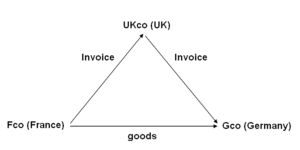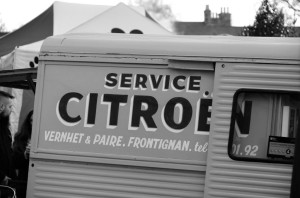The subject of invoices is often misunderstood and can create serious issues if mistakes are made. VAT is a transaction tax, so primary evidence of the transaction is of utmost importance. Also, a claim for input tax is usually not valid unless it is supported by an original valid invoice HMRC can, and often do, reject input claims because of an inaccurate invoice. There are a lot of misconceptions about invoices, so, although a rather dry subject, it is very important and I thought it would be useful to have all the information in one place, so here is my guide:
Obligation to provide a VAT invoice
With certain limited exceptions a VAT registered person must provide the customer with an invoice showing specified particulars including VAT in the following circumstances.
(a) He makes a supply of goods or services in the UK (other than an exempt supply) to a taxable person.
(b) He makes a supply of goods or services to a person in another EC country for the purposes of any business activity carried on by that person. But no invoice is required where the supply is an exempt supply which is made to a person in another EC country which does not require an invoice to be issued for the supply. (Because practice varies widely across the EC, HMRC guidance is that businesses should be guided by their customers as to whether invoices are required for exempt supplies.)
(c) He receives a payment on account from a person in another EC country in respect of a supply he has made or intends to make.
Exceptions
The above provisions do not apply to the following supplies.
• Zero-rated supplies (other than supplies for acquisition by a person registered in another EC country, see (b) above).
• Supplies where the VAT charged is excluded from credit under VATA 1994, s 25(7) (eg business entertaining and certain motor cars) although a VAT invoice may be issued in such cases.
• Supplies on which VAT is charged but which are not made for a consideration. This includes gifts and private use of goods.
• Sales of second-hand goods under one of the special schemes. Invoices for such sales must not show any VAT.
• Supplies that fall within the Tour Operators’ Margin Scheme(TOMS). VAT invoices must not be issued for such supplies.
• Supplies where the customer operates a self-billing arrangement.
• Supplies by retailers unless the customer requests a VAT invoice.
• Supplies by one member to another in the same VAT group.
• Transactions between one division and another of a company registered in the names of its divisions.
• Supplies where the taxable person is entitled to issue, and does issue, invoices relating to services performed in fiscal and other warehousing regimes.
Documents treated as VAT invoices
Although not strictly VAT invoices, certain documents listed below are treated as VAT invoices either under the legislation or by HMRC.
(1) Self-billing invoices
Self-billing is an arrangement between a supplier and a customer in which the customer prepares the supplier’s invoice and forwards it to him, normally with the payment.
(2) Sales by auctioneer, bailiff, etc.
Where goods (including land) forming part of the assets of a business carried on by a taxable person are, under any power exercisable by another person, sold by that person in or towards satisfaction of a debt owed by the taxable person, the goods are deemed to be supplied by the taxable person in the course or furtherance of his business.
The particulars of the VAT chargeable on the supply must be provided on a sale by auction by the auctioneer and where the sale is otherwise than by auction by the person selling the goods. The document issued to the buyer is treated as a VAT invoice.
(3) Authenticated receipts in the construction industry.
(4) Business gifts
Where a business makes a gift of goods on which VAT is due, and the recipient uses the goods for business purposes, that person can recover the VAT as input tax (subject to the normal rules). The donor cannot issue a VAT invoice (because there is no consideration) but instead may provide the recipient with a ‘tax certificate’ which can be used as evidence to support a deduction of input tax. The tax certificate may be on normal invoicing documentation overwritten with the statement:
“Tax certificate – No payment is necessary for these goods. Output tax has been accounted for on the supply.”
Full details of the goods must be shown on the documentation and the amount of VAT shown must be the amount of output tax accounted for to HMRC.
Invoicing requirements and particulars
A VAT invoice must contain certain basic information.
A VAT invoice must show the following particulars.
(a) A sequential number based on one or more series which uniquely identifies the document.
The ‘invoice number’ can be numerical, or it can be a combination of numbers and letters, as long as it forms part of a unique and sequential series. Where there is a break in the series, eg; where an invoice is cancelled or spoiled and never issued to a customer, this is still acceptable as long as the relevant invoice is retained.
(b) The time of the supply, ie tax point.
(c) The date of issue of the document.
(d) The name, address and registration number of the supplier.
(e) The name and address of the person to whom the goods or services are supplied.
(f) A description sufficient to identify the goods or services supplied.
(g) For each description, the quantity of the goods or extent of the services, the rate of VAT and amount payable, excluding VAT, expressed in any currency.
(h) The unit price.
This applies to ‘countable’ goods and services. For services, the countable element might be, for example, an hourly rate or a price paid for standard services. If the supply cannot be broken down into countable elements, the total VAT-exclusive price is the unit price.
(i) The gross amount payable, excluding VAT, expressed in any currency.
(j) The rate of any cash discount offered.
(k) The total amount of VAT chargeable expressed in sterling.
(l) Where the margin scheme for SECOND-HAND GOODS or theTOMS is applied, either a reference to the appropriate provision of EC Council Directive 2006/112/EC or the corresponding provision of VATA 1994or any indication that the margin scheme has been applied.
The way in which margin scheme treatment is referenced on an invoice is a matter for the business and but we recommend:
• “This is a second-hand margin scheme supply.”
• “This supply falls under the Value Added Tax (Tour Operators) Order 1987.”
The requirement only applies to TOMS invoices in business to business transactions.
(m) Where a VAT invoice relates in whole or in part to a supply where the person supplied is liable to pay the VAT, either a reference to the appropriate provision of EC Council Directive 2006/112/EC or the corresponding provision of VATA 1994 or any indication that the supply is one where the customer is liable to pay the VAT.
This covers UK supplies where the customer accounts for the VAT (eg under the gold scheme or any reverse charge requirement under the missing trader intra-community rules). The way in which margin scheme treatment is referenced on an invoice is a matter for the business and we recommend: “This supply is subject to the reverse charge”.
Exempt or zero-rated supplies
Invoices do not have to be raised for exempt or zero-rated transactions when supplied in the UK. But if such supplies are included on invoices with taxable supplies, the exempt and zero-rated supplies must be totalled separately and the invoice must show clearly that there is no VAT payable on them.
Leasing of motor cars
Where an invoice relates wholly or partly to the letting on hire of a motor car other than for self-drive, the invoice must state whether the car is a qualifying vehicle
Alternative evidence to support a claim for input tax
In certain situations HMRC can use its discretion and allow an input tax with documentary evidence other than an invoice. Their guidance here
Electronic invoices
Full information on electronic invoicing here
Retailers
Retailers may issue a “less detailed tax invoice” if a customer requests one. the supply must be for £250 or less (including VAT) and must show:
- your name, address and VAT registration number
- the time of supply (tax point)
- a description which identifies the goods or services supplied
- and for each VAT rate applicable, the total amount payable, including VAT and the VAT rate charged.
Summary
As may be seen, it is a matter of law whether an invoice is valid and when they must be issued. Therefore it is important for a business to understand the position and for its system to be able to produce a valid tax invoice and to recognise what is required to claim input tax. As always with VAT, there are penalties for getting documentation wrong. Please contact us should you have any queries.

 In this example; a UK company (UKco) receives an order from a customer in Germany (Gco). To fulfil the order the UK supplier orders goods from its supplier in France (Fco). The goods are delivered from France to Germany.
In this example; a UK company (UKco) receives an order from a customer in Germany (Gco). To fulfil the order the UK supplier orders goods from its supplier in France (Fco). The goods are delivered from France to Germany.